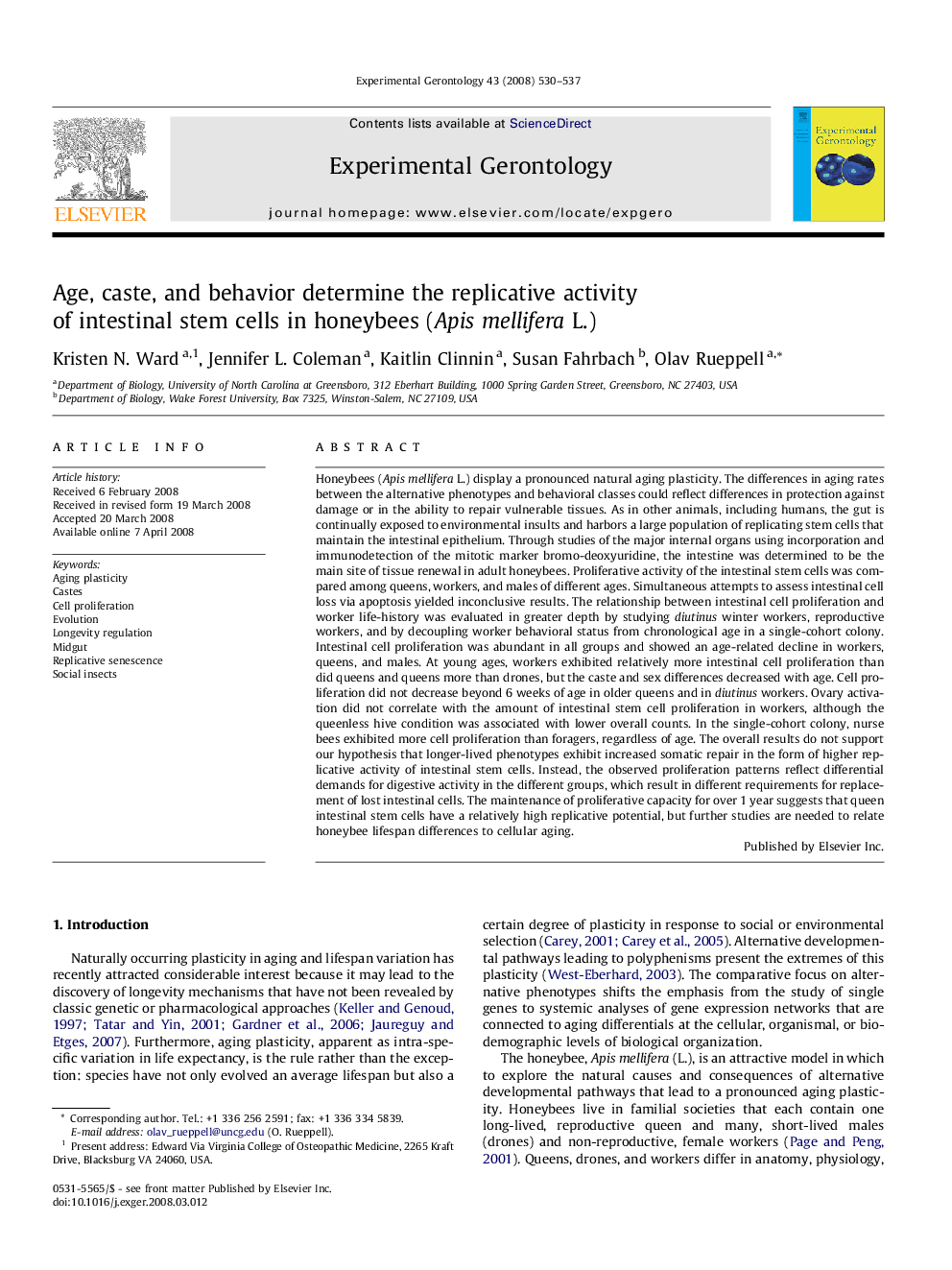| کد مقاله | کد نشریه | سال انتشار | مقاله انگلیسی | نسخه تمام متن |
|---|---|---|---|---|
| 1907507 | 1046368 | 2008 | 8 صفحه PDF | دانلود رایگان |

Honeybees (Apis mellifera L.) display a pronounced natural aging plasticity. The differences in aging rates between the alternative phenotypes and behavioral classes could reflect differences in protection against damage or in the ability to repair vulnerable tissues. As in other animals, including humans, the gut is continually exposed to environmental insults and harbors a large population of replicating stem cells that maintain the intestinal epithelium. Through studies of the major internal organs using incorporation and immunodetection of the mitotic marker bromo-deoxyuridine, the intestine was determined to be the main site of tissue renewal in adult honeybees. Proliferative activity of the intestinal stem cells was compared among queens, workers, and males of different ages. Simultaneous attempts to assess intestinal cell loss via apoptosis yielded inconclusive results. The relationship between intestinal cell proliferation and worker life-history was evaluated in greater depth by studying diutinus winter workers, reproductive workers, and by decoupling worker behavioral status from chronological age in a single-cohort colony. Intestinal cell proliferation was abundant in all groups and showed an age-related decline in workers, queens, and males. At young ages, workers exhibited relatively more intestinal cell proliferation than did queens and queens more than drones, but the caste and sex differences decreased with age. Cell proliferation did not decrease beyond 6 weeks of age in older queens and in diutinus workers. Ovary activation did not correlate with the amount of intestinal stem cell proliferation in workers, although the queenless hive condition was associated with lower overall counts. In the single-cohort colony, nurse bees exhibited more cell proliferation than foragers, regardless of age. The overall results do not support our hypothesis that longer-lived phenotypes exhibit increased somatic repair in the form of higher replicative activity of intestinal stem cells. Instead, the observed proliferation patterns reflect differential demands for digestive activity in the different groups, which result in different requirements for replacement of lost intestinal cells. The maintenance of proliferative capacity for over 1 year suggests that queen intestinal stem cells have a relatively high replicative potential, but further studies are needed to relate honeybee lifespan differences to cellular aging.
Journal: Experimental Gerontology - Volume 43, Issue 6, June 2008, Pages 530–537